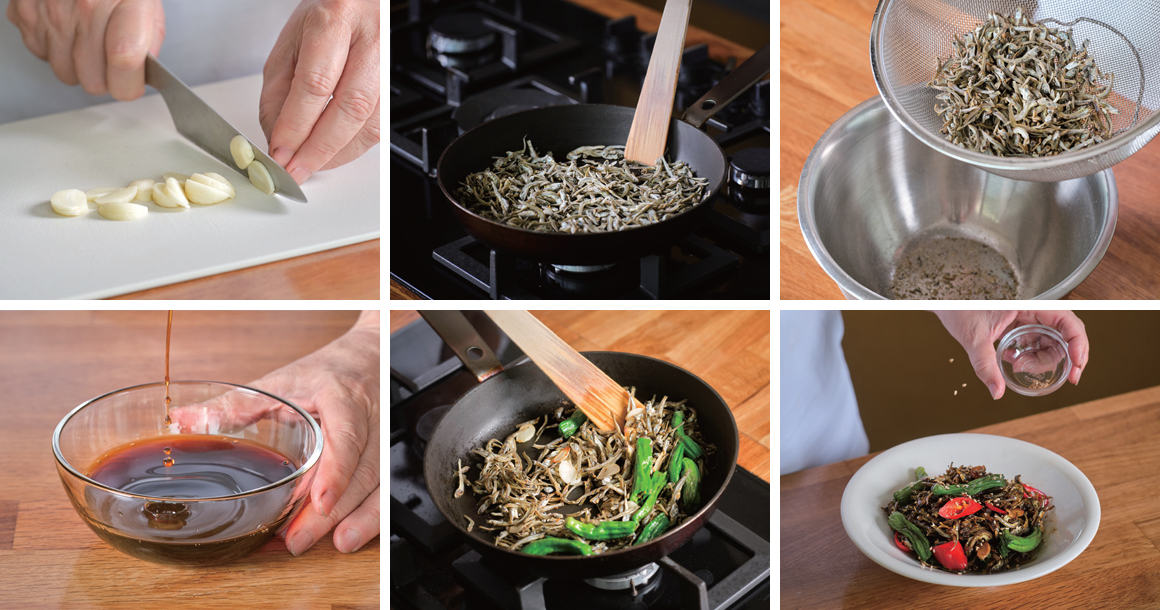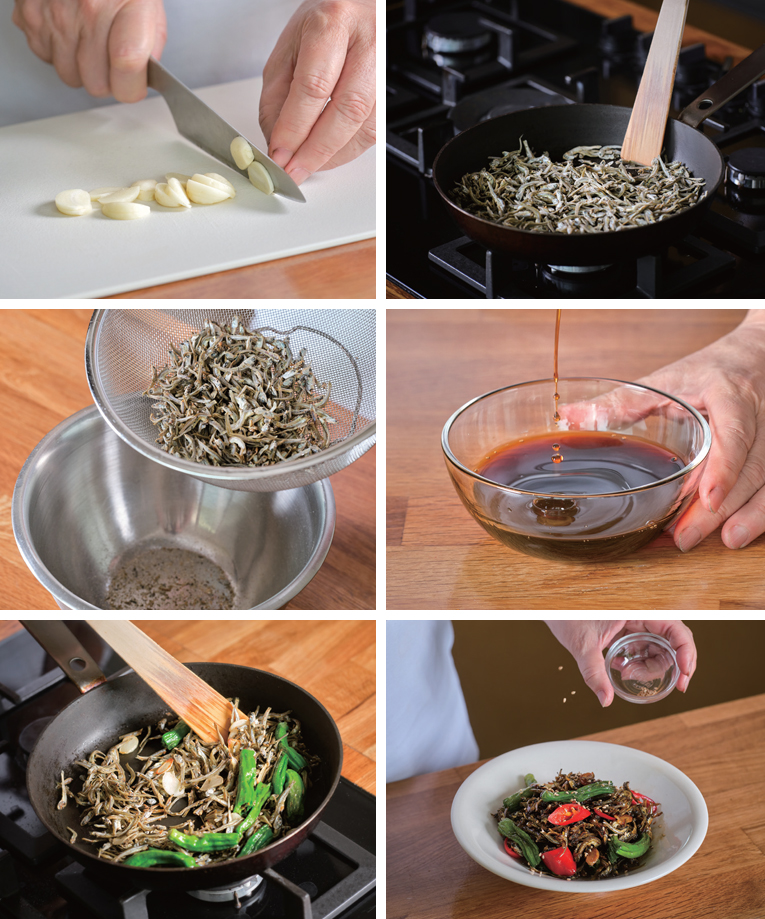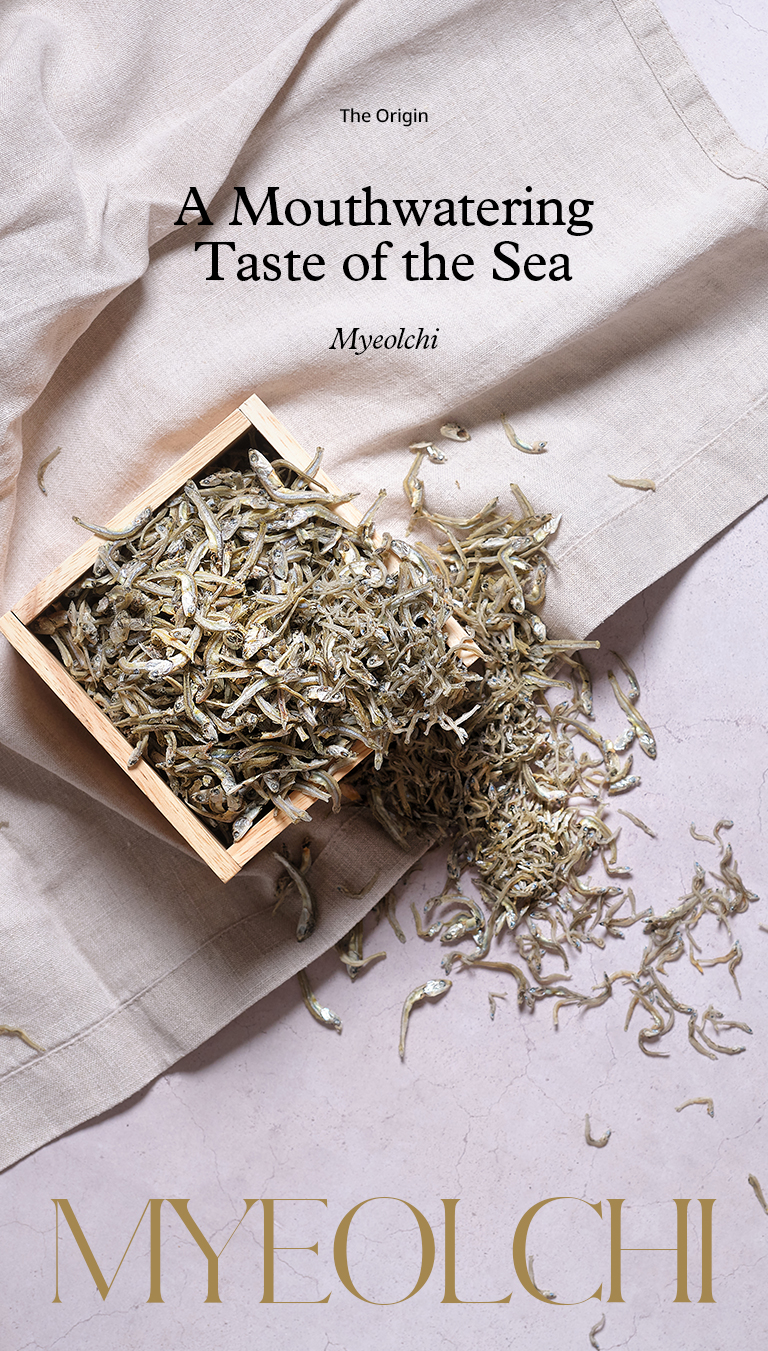
Myeolchi (anchovies) are abundant in the seas around Korea, where fishing crews have carefully perfected the complex art of selecting the best fish to catch over the course of the calendar year. Discover the secret of this often-overlooked ingredient—a key part of K-cuisine.
Writer. Tim Alper
Korea is not a country full of vast grassland steppes, ideal for pastoral agriculture. Nor is it replete with vast flatlands, perfect for growing crops like wheat, barley or rye. Instead, it is a mountainous, rocky peninsula, surrounded by over 3,300 islands. The sea’s influence on Korea’s culture, economy and cuisine cannot be understated. Three branches of warm sea currents exert their influence on the waters here.
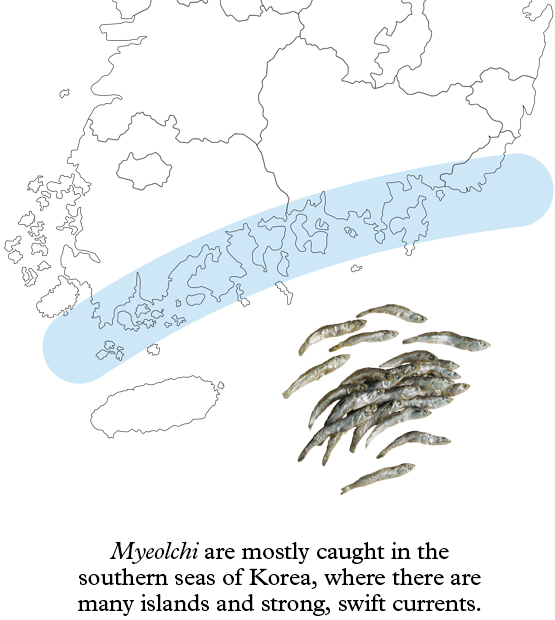
In some areas, these currents can be deceptively powerful, a fact that the great Korean hero Admiral Yi Sun-sin used to his advantage in the 1597 Battle of Myeongnyang. These secrets have long been known to Korean seaside communities for a reason that has nothing to do with naval defense: their influence on myeolchi (anchovy) fishing. And without anchovies, Korean cooking would be unrecognizable.
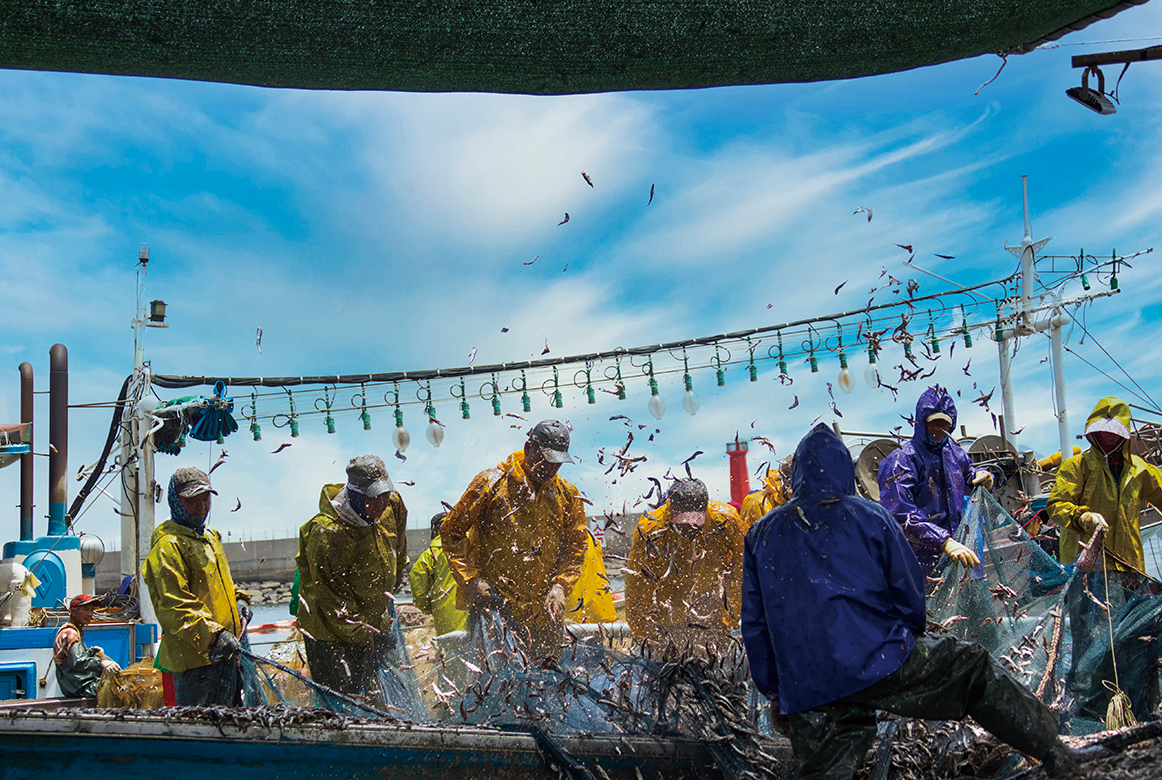 The sight of catching myeolchi / © TongRo Images Inc.
The sight of catching myeolchi / © TongRo Images Inc.
Strong tidal currents in the southwestern coastal areas and weaker forces in southeastern areas have a marked influence on myeolchi distribution and spawning in Korea. Anchovies like to migrate to coastal areas to spawn. Their eggs and larvae disperse in the various currents, with eddies and tidal movements also playing a role in dispersion.
As the seasons change, so do the movement patterns of these tiny fish. They tend to swim further from the shore during the winter months. As spring arrives, they instinctively move toward warmer waters more suitable for use as spawning grounds.
Since ancient times, Korean fishing crews have carefully studied the anchovy’s movements. And over the centuries, they have perfected the art of fishing for myeolchi. They learned how to avoid disturbing the fish during their spawning periods, selectively picking out smaller myeolchi when it was safe to do so. They discovered that in certain colder straits, they would find much bigger, stronger myeolchi—the only ones with enough power to navigate the fastest tidal currents.
This knowledge allowed generations of Korean fishing families to catch thousands of myeolchi in their nets every year without running the risk of overfishing. It also let them understand where to go if they wanted to catch smaller fish, and where to head in search of bigger myeolchi.
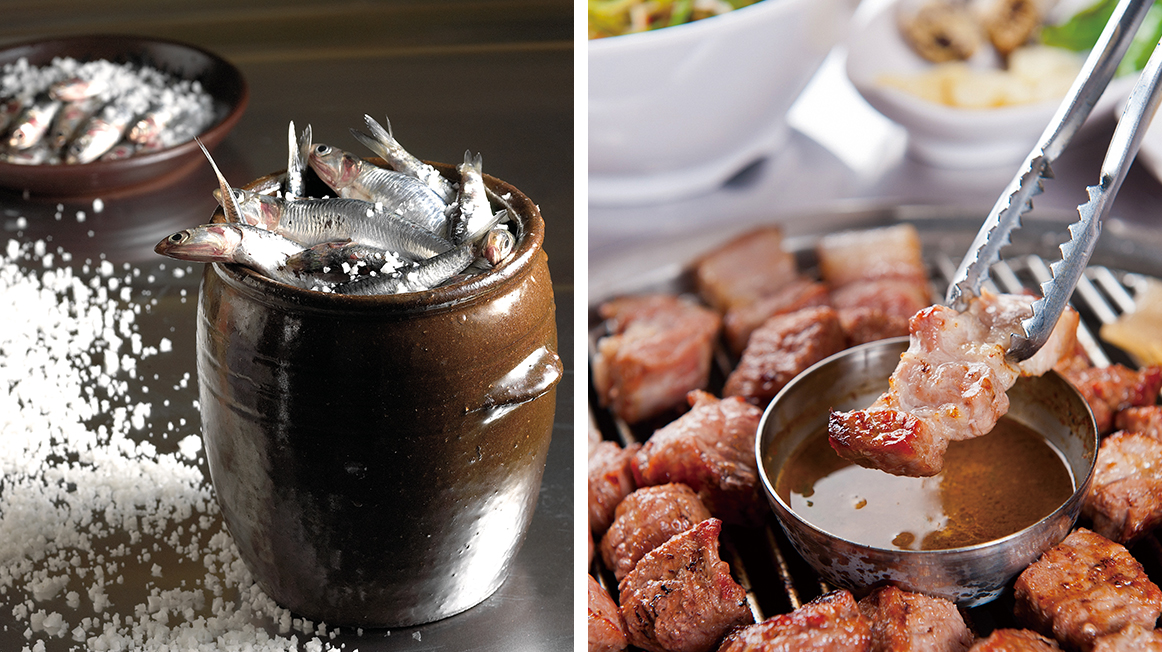 (Left) Myeolchijeot is made by mixing cleaned myeolchi with sea salt, blending them, putting them in a container, and fermenting them. / © TongRo Images Inc.
(Left) Myeolchijeot is made by mixing cleaned myeolchi with sea salt, blending them, putting them in a container, and fermenting them. / © TongRo Images Inc.
(Right) In Jeju Island, myeolchijeot (salted anchovies, called meljeot in the Jeju Island dialect) is used as a dipping sauce for Jeju-style grilled pork. / © Gettyimages Korea.
Korean cuisine makes use of all sizes of myeolchi. Cooks use the smallest varieties caught in the late summer months to make stir-fried dishes. Some of these tiny fish are mixed into steamed rice to make a simple but nutritious dish named myeolchi-bap.
Slightly larger myeolchi, caught in the early fall, tend to be a bit longer (3-4 cm). Cooks like to use these as the main ingredient in braised, savory dishes that also contain peppers, perilla leaves and white radish. Myeolchi caught in late fall and early winter are often eaten as an accompaniment to beer, soju (clear liquor) or other alcoholic drinks. And the largest variety, caught toward the end of winter at a length of around 7 cm, are often reserved for use in stock preparations.
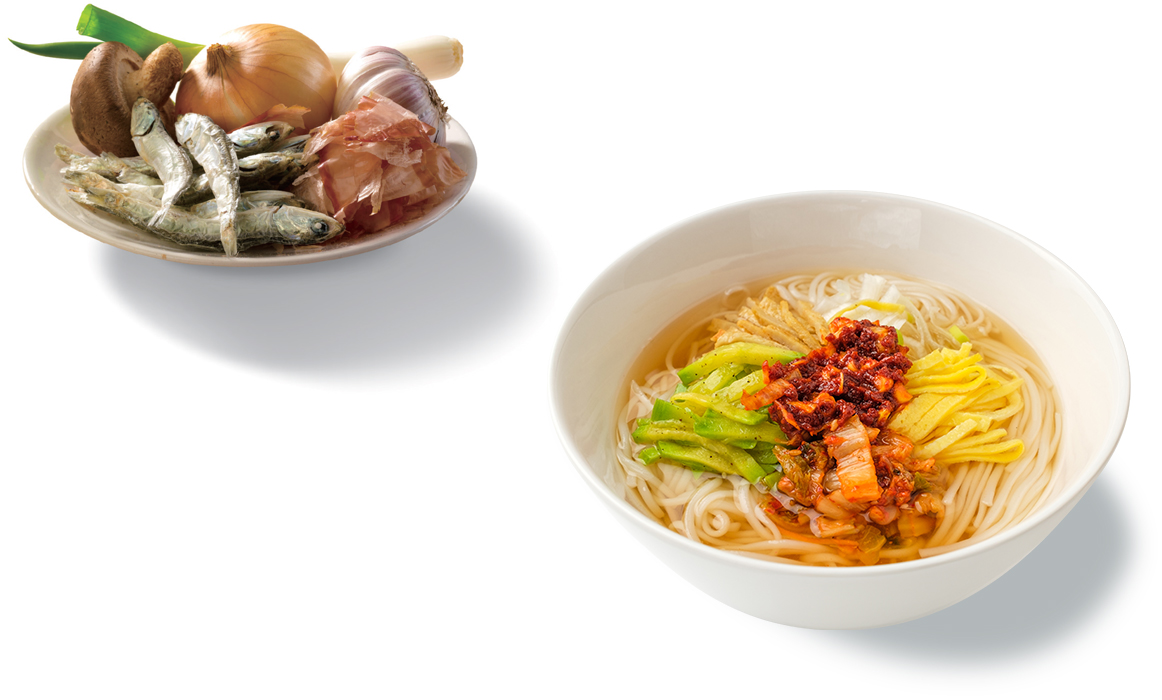 (Left) Myeolchi are commonly used as a broth base in Korean cooking. /© TongRo Images Inc.
(Left) Myeolchi are commonly used as a broth base in Korean cooking. /© TongRo Images Inc.
(Right) Janchiguksu (banquet noodles), noodles prepared with a broth made from myeolchi / © TongRo Images Inc.
The above is just a tiny snapshot of the seemingly infinite uses of anchovies in the Korean kitchen. In many cases, you would be forgiven for not even noticing that a dish contains anchovies at all. This is particularly true of dishes made with myeolchijeot (salted anchovies). To make this preparation, cooks clean and dry the fish on round baskets woven from bamboo. They then add salt and store the preparation in large earthenware jars for up to six months. This ferments down into a dark liquid, which cooks either filter off into a liquid extract or prepare as a salty side dish accompaniment for steamed rice.
The extract is a commonly used base for kimchi, as well as scores of stew and soup dishes. Some cooks also use it to add flavor to boiled vegetable-based dishes. On Jeju Island, it is famously used as a dipping sauce for grilled pork preparations.
The abundance of myeolchi in Korean waters has helped boost its popularity throughout the ages. Unlike other fish, which often need to be eaten fresh or frozen, Korean anchovies are typically dried. This makes storage and transport easy, helping bring down costs. As such, they have become a timeless pantry staple.
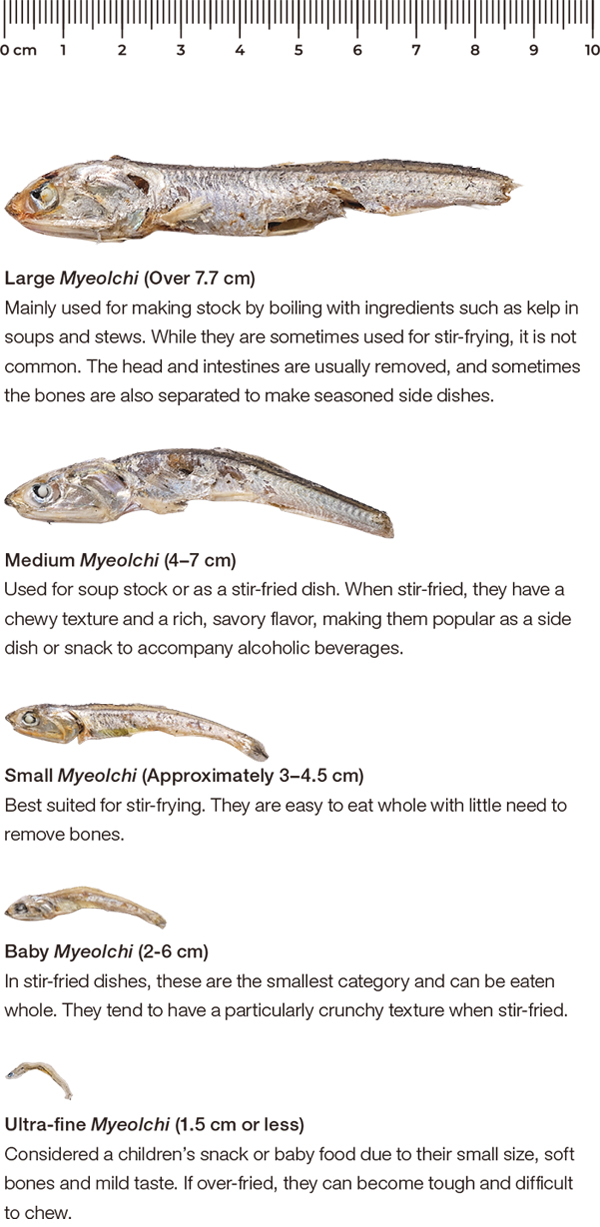
Koreans have long been aware of the anchovy’s health-bestowing qualities. But in recent years, scientists have confirmed their many benefits. The anchovy is considered to be an oily fish, and is thus high in omega-3 fatty acids. These acids are linked with lower rates of inflammation, as well as good heart and brain health.
These fish are also high in protein, as well as selenium, calcium, potassium, niacin and vitamin B12. A serving of five myeolchi contains 6 g of protein, as well as just 42 calories and 2 g of fat.
Fans of global cuisine will find many similarities and as many differences between anchovy preparations elsewhere and in Korea. Myeolchi extract is not unlike Britain’s Worcestershire sauce, a flavor enhancer and common stew base that is also made with fermented anchovies. But the most ubiquitous global anchovy preparation—tinned anchovies—is actually quite hard to find in Korea.
More common are dishes like janmyeolchibokkeum (stir-fried small dried anchovies), a delightfully, deceptively sweet-flavored blend of dried myeolchi, peanuts and sticky syrup. No matter whether you are a lover of bold marine flavors or more understated salty undertones, you are bound to find a Korean myeolchi-based dish to fall in love with.
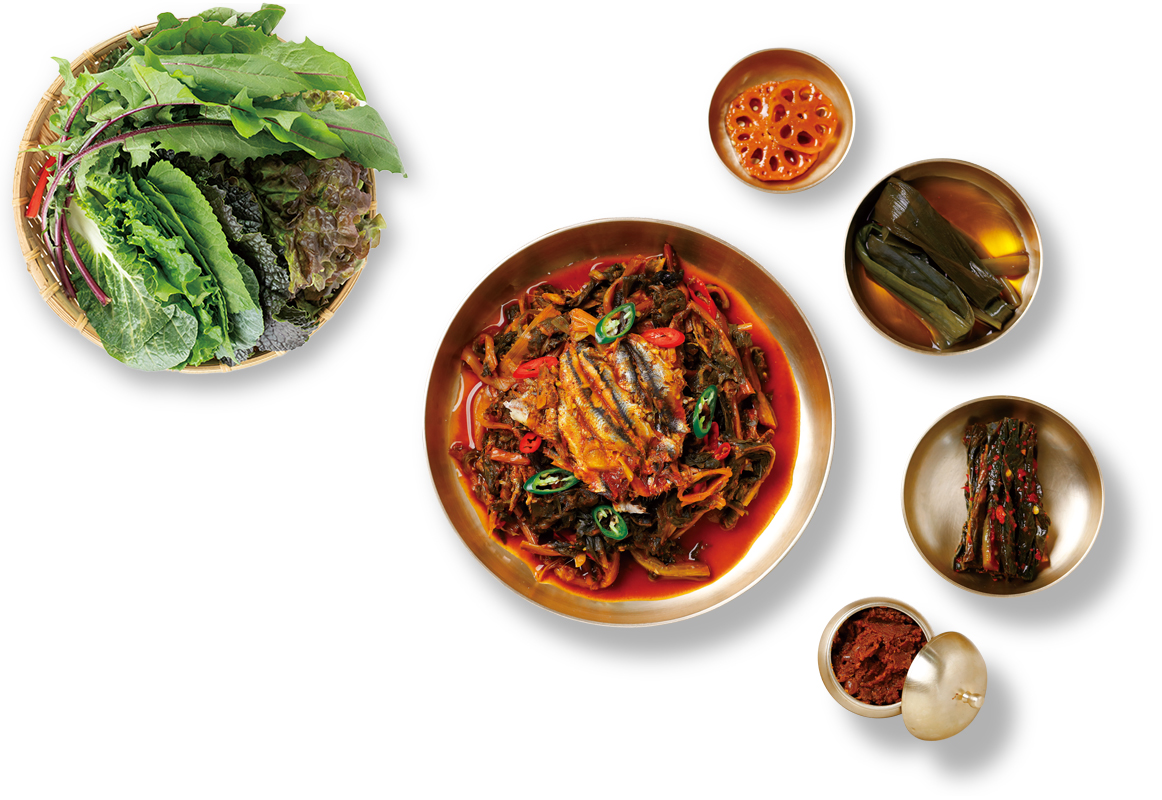 Myeolchi ssambap (brasied anchovies with leaf wraps and rice) is a specialty from the southern coast of Korea. The myeolchi is braised in a doenjang (soybean paste) broth, served with vegetables like dried radish greens or aged kimchi, and wrapped in green leaves with rice. / © TongRo Images Inc.
Myeolchi ssambap (brasied anchovies with leaf wraps and rice) is a specialty from the southern coast of Korea. The myeolchi is braised in a doenjang (soybean paste) broth, served with vegetables like dried radish greens or aged kimchi, and wrapped in green leaves with rice. / © TongRo Images Inc.
60g dried myeolchi, 8 shishito peppers, 5 garlic cloves, 1 red chili pepper, a pinch of toasted sesame seeds, 1 Tbsp cooking wine, 1/2 Tbsp sugar, 1 Tbsp ganjang (soy sauce), 1 Tbsp corn syrup, 1/2 Tbsp sesame oil, a bit of cooking oil
